New IssueAeroSafety World Magazine February 2012Volume 7 Cover StoryErasing Confusion (Text only)
Runway SafetyHot Spot Intelligence (Text only)
Causal FactorsThrust into an Overrun (Text only)
Maintenance MattersPressure Check (Text only)
Flight OpsStepping Aside (Text only)
Flight TechSafety at Eye Level (Text only)
Cabin SafetyBeating the Odds (Text only)
Airport OpsTo Build an Airport (Text only)
President’s MessageAnother Brick in the Wall (Text only)There is no question that fatigue is a major risk that must be managed, but I think it is important to understand how these systems fit into the context of other safety systems and programs being implemented globally. [Download PDF 1 page. 86K] Editorial PagePapers Please (Text only)For a domestic operator, the United States provides one of the largest contiguous airspaces in the world governed by common rules and procedures. However, the comfort domestic flying confers can set up the unwary for a major problem when oceans are crossed and a different regard for International Civil Aviation Organization standards and recommended practices is encountered. [Download PDF 1 page. 73K] Safety CalendarIndustry Events (Text only)A listing of aviation safety-related conferences, seminars and meetings. [Download PDF 1 page. 72K] Air MailLetters From Our Readers (Text only)I applaud the work done by Flight Safety Foundation, and usually learn something new with each issue of AeroSafety World. I also share the Foundation's often-expressed concern regarding the trend toward criminalizing aviation accidents and incidents, and worry that this may start appearing in the U.S. or Canada. [Download PDF 1 page. 155K] In BriefSafety News (Text only)The aviation community must be "faster and more flexible" in its responses to limit the disruption of air traffic caused by volcanic eruptions and other natural disasters, says Siim Kallas, the European Commission vice president responsible for transport. [Download PDF 3 pages. 203K] Data LinkBin There Done That (Text only)Carry-on items falling from overhead storage bins struck about a third of responding flight attendants at least once during a one-year period. This was among the findings of a membership survey by the Association of Flight Attendantsâ€"Communications Workers of America. [Download PDF 5 pages. 519K] Info ScanDivided by a Common Language (Text only)The International Civil Aviation Organization (ICAO) has committed itself to developing English language proficiency requirements so that pilots and air traffic controllers in international operations not only speak the same language but also can understand each other with as little ambiguity as possible. [Download PDF On RecordMode Mixup (Text only)The following information provides an awareness of problems in the hope that they can be avoided in the future. The information is based on final reports by official investigative authorities on aircraft accidents and incidents. [Download PDF 8 pages. 281K] |
- Home
- About
- Governance
- Events
- FSF MED Celebrating 75 years of ICAO
- FSF MED 10 Years of Service to Aviation
- Crisis Management Plans in Aviation
- Satisfying increased demand for capacity while maintaining safety / special challenges for E. Mediterranean and M. East regions
- Air Transport Importance for Tourism
- 7th International Conference
- Aviation Safety For Off-shore Helicopter Operations / Search and Resque
- Joint meeting of executive boards of FSF-MED
- 6th International Conference
- 5th International Conference
- Seminar on regional cooperation for general aviation
- Joint Meeting of the Advisory Committee and the Executive Board
- Conference June 2013
- Regional Seminars Athens 2012
- Aviation Security Seminar
- Regional Seminar Bucharest
- Flight Safety Events (Global)
- News
- Publications
- Links
- Contact


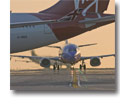 Taxiway or runway confusion events often are the precursors of runway incursions and, potentially, of ground collisions between two aircraft or between an aircraft and an airport vehicle or construction equipment. Most can be mitigated by the same safety programs that, in concert with system-level defenses and controls and best practices for flight crews, prevent runway incursions. [
Taxiway or runway confusion events often are the precursors of runway incursions and, potentially, of ground collisions between two aircraft or between an aircraft and an airport vehicle or construction equipment. Most can be mitigated by the same safety programs that, in concert with system-level defenses and controls and best practices for flight crews, prevent runway incursions. [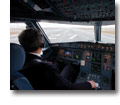 Mounting evidence confirms that publication of airport hot spots raises runway-safety threat awareness, several U.S. specialists say. Noting successes at sites where runway incursions have dropped significantly, an ongoing standardization initiative by the U.S. Federal Aviation Administration has created a single national process for generating hot-spot notifications to aircraft operators, pilots, airfield drivers and air traffic controllers. [
Mounting evidence confirms that publication of airport hot spots raises runway-safety threat awareness, several U.S. specialists say. Noting successes at sites where runway incursions have dropped significantly, an ongoing standardization initiative by the U.S. Federal Aviation Administration has created a single national process for generating hot-spot notifications to aircraft operators, pilots, airfield drivers and air traffic controllers. [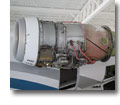 The captain's decision to reject the takeoff after the airplane had accelerated beyond V1 and electronic system damage that resulted in forward thrust being produced when reverse thrust was selected are among the issues discussed by the U.S. National Transportation Safety Board in its final report on the fatal crash of a Learjet 60 in Columbia, South Carolina, U.S., on Sept. 19, 2008. [
The captain's decision to reject the takeoff after the airplane had accelerated beyond V1 and electronic system damage that resulted in forward thrust being produced when reverse thrust was selected are among the issues discussed by the U.S. National Transportation Safety Board in its final report on the fatal crash of a Learjet 60 in Columbia, South Carolina, U.S., on Sept. 19, 2008. [ Some operators are unaware of appropriate tire-pressure check intervals and, as a result, are flying airplanes with dangerously under-inflated tires, the U.S. National Transportation Safety Board
Some operators are unaware of appropriate tire-pressure check intervals and, as a result, are flying airplanes with dangerously under-inflated tires, the U.S. National Transportation Safety Board 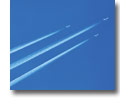 Use of strategic lateral offset procedures on crowded routes across the North Atlantic has increased significantly in the past two years, according to data compiled by air navigation service providers that handle air traffic in the area. [
Use of strategic lateral offset procedures on crowded routes across the North Atlantic has increased significantly in the past two years, according to data compiled by air navigation service providers that handle air traffic in the area. [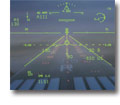 More than a third of nearly 1,000 recent transport category airplane accidents might have been prevented by head-up guidance system technology, according to a special report released in November 2009 by Flight Safety Foundation. [
More than a third of nearly 1,000 recent transport category airplane accidents might have been prevented by head-up guidance system technology, according to a special report released in November 2009 by Flight Safety Foundation. [ An airline passenger's sudden cardiac arrest during flight creates a rare and stressful experience for the responding flight attendants, and health outcomes of these events have been significantly poorer than in gambling casinos although automated external defibrillators are widely used in both environments. [
An airline passenger's sudden cardiac arrest during flight creates a rare and stressful experience for the responding flight attendants, and health outcomes of these events have been significantly poorer than in gambling casinos although automated external defibrillators are widely used in both environments. [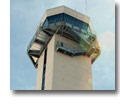 Building a completely new airport in the United States is not an easy thing to do, especially if that airport has a 10,000-ft (3,048-m) runway, a 5,000-to-6,000 ft (1,524-to-1,829 m) crosswind runway in the works and land reserved for an 8,400-ft (2,560-m) parallel runway.
Building a completely new airport in the United States is not an easy thing to do, especially if that airport has a 10,000-ft (3,048-m) runway, a 5,000-to-6,000 ft (1,524-to-1,829 m) crosswind runway in the works and land reserved for an 8,400-ft (2,560-m) parallel runway.